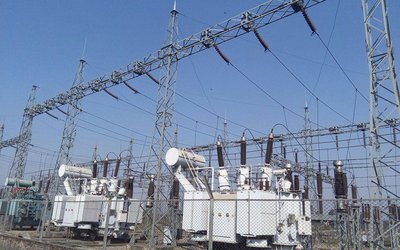Nepal was struck by a very big earthquake on April 25, 2015 measuring 7.8 in Richter scale , which has been followed by innumerable aftershocks, one of them almost equally devastating April 29 aftershock measuring 7.3 in Richter scale. A very large proportion of population of our country had to go through brief terrifying moments when our country was struck by the earthquakes. At that time danger of death loomed large in everyone’s mind.
The earthquakes have resulted in colossal loss of life and property in central region of our country including Kathmandu. Despite such great losses, the earthquake did not come as a complete surprise. It is a well known fact that Nepal is prone to big earthquakes. Our country is periodically hit by big earthquakes because such earthquakes are the result of an ongoing collision between tectonic plates that cause some of the deadliest tremors in our Himalayan region.
Collision between Tectonic Plates
German scientist Alfred Wegener had for the first time developed a credible theory of continental drift in 1915. This theory serves as the foundation of plate tectonic principle that explains how the mountains including the Himalayas are formed and also the cause of major earthquakes.
Along the northern border of Nepal is the so-called Indus –Tsangpo suture zone, where the Indian plate collided about 50 million years ago with the Eurasian plate. As a result, both these plates were squeezed, activating a series of crustal-scale contractional faults that thrust part of the Indian plate underneath Eurasian plate. Indian plate has continued to plow into Eurasian plate uplifting Himalayas and Tibet. The collision created the Himalayan range that includes the world’s highest peaks.
Active Plate Boundry Shifting South
Initial convergence between the Indian and Eurasian plates involved the closing of an ancient sea located between these two giant land masses. During this stage in the evolution of the Himalayas, the Indus-Tsangpo suture (ITS) acted as the primary locale of plate interaction and convergence.
It is believed that between 40 and 50 million years ago the sea between Indian and Eurasian land masses was completely closed and the ITS ceased to be the active plate boundary. Since the closing of the ITS the active plate boundary has shifted progressively to the south. First it was the main central thrust (MCT), which is immediate south to the ITS and more recently further south to main boundary thrust (MBT). Rocks between the ITS and the MCT, and the rocks between the MCT and the MBT of our Himalayas are the slices of the Indian plate that have been accreted onto the Eurasian plate.
Faults
Earthquakes are triggered when tensions built up due to relative movement between rocks along faults are suddenly released. Earthquakes can also occur when rock folds that can no longer support the elastic strain are ruptured to form a fault. The seismic energy from these events travels through the Earth in the form of waves and causes earthquakes.
The hypocenter describes the position of the seismic focus and is specified by its depth, longitude and latitude whereas the epicenter specifies only longitude and latitude. The April 25 Nepal earthquake occurred 15 kilometers below the surface. It was a shallow earthquake.
Real damages of structures due to earthquakes depends upon several factors. The higher the magnitude is higher the damages. The longer the distance from the focus point is lesser in damage for the same earthquake. The April 25 Nepal earthquake was a shallow earthquake so the damages inflicted by the earthquake was quite heavy.
Seismic Waves
There are basically two types of seismic waves spreading out from the epicenter. They are Primary waves and Secondary waves. Primary waves are compressional wave that shake back and forth like coil of spring in the direction of the wave. Secondary waves are the shear wave making the particle to vibrate at right angle to the direction of propagation. When above two waves reach the surface they are transformed into long waves, which travel along the surface. The surface waves will either be Love waves ( which vibrate horizontally at right angle to wave direction) or Raleigh waves ( which travel like sea waves).
Primary wave comes from below, it bumps the house upward. It causes very little damages. Secondary waves are more dangerous than primary waves because they have greater amplitude and produce vertical and horizontal motion of the ground. It is the surface waves that produce the most violent damages.
Precious Initial Few Seconds
During the recent Nepal earthquakes we were able to see for ourselves that the Primary waves travel fastest and are felt first. Even after being hit by less dangerous primary seismic waves many of us were able to move to more safer positions in course of few precious seconds before the arrival of destructive secondary and long waves.
Surface Waves
Surface waves produce ground shaking at the earth’s surface but very little motion deep in the earth. The amplitude of surface waves diminish less rapidly with distance than the amplitude of primary or secondary waves. Surface waves are often the most important component of ground shaking far from the earthquake source, thus can be the most disastrous. They can be the most destructive waves in that they appear to roll along lifting and dropping the ground as they pass.
Peak Ground Acceleration Controversy
Damage to structures is related to peak ground acceleration (PGA) and the duration of earthquake. The PGA is used to set building codes and design hazard risks. It is expressed in “g” (the acceleration due to Earth’s gravity).
In an earthquake, damages to buildings and infrastructure are related more closely to ground motion, rather than the magnitude of earthquake. In 2011 Tohoku earthquake (Japan) and 2011 Christchurch earthquake (New Zealand) the single direction maximum recorded PGA were 2.7g and 2.2g respectively. It is understandable that the PGA of Christ Church earthquake was very high despite the fact that the magnitude of that earthquake was only 6.3 in Richter scale because the depth of epicenter was only 5 km. Earthquake damages are correlated with peak ground velocity also.
In India, areas with expected PGA values higher than 0.36g are classed as “Very High Damage Risk Zone”. Environmentalists had raised great concern about the underestimation of value of the PGA adopted in design of India’s Tehri dam project.
Disastrous Consequences
Nepal is prone to more big earthquakes in future so in planning our big high dam projects our country must pay special attention to their geological aspects in general and the seismological aspects in particular or else the consequences could be disastrous. One of such unfortunate examples is the Malpasset dam disaster. In 1959 the Malpasset dam built in France completely collapsed accompanied with great loss of life and property because the dam geology was not fully studied.

Dr. A.B. Thapa
Thapa writes on water resources issue
- Dudhkosi Multipurpose Project
- Jul 11, 2022
- Dudh-Kosi Power Project And Kosi Treaty
- Sep 27, 2021
- Uttarakhand Glaciers And Recent Disaster: A Lesson To Our Country
- Mar 02, 2021
- Multipurpose Langtang After Melamchi: Inter-Basin Water Transfer
- Nov 04, 2020
- Large Storage Dams Projects Wary of Giving Away Children’s Inheritance
- Dec 22, 2019
















